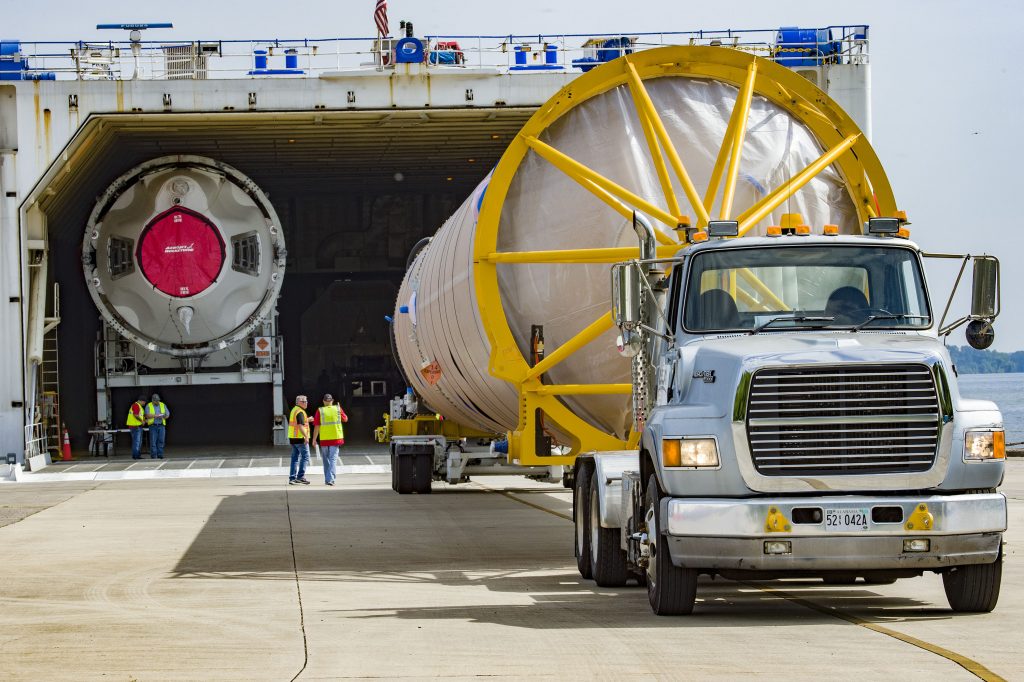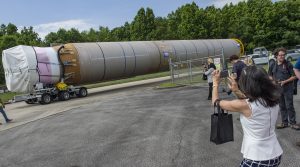
The United Launch Alliance Atlas V rocket that will launch Boeing’s CST-100 Starliner on the Crew Flight Test (CFT) mission to the International Space Station for NASA’s Commercial Crew Program emerged on Thursday from the production factory in Decatur, Alabama for transport in a giant cargo ship to Cape Canaveral Air Force Station in Florida.

The rocket, known as AV-082, will launch Starliner and its crew of NASA astronauts Mike Fincke and Nicole Mann, and Boeing astronaut Chris Ferguson to the station following the spacecraft’s maiden voyage, the uncrewed Orbital Flight Test targeted for August.
From the manufacturing facility in Decatur, Alabama, the Atlas V booster stage and Dual Engine Centaur upper stage were moved down the road for loading into the Mariner vessel docked nearby. The 312-foot-long ship is purpose-built to navigate both shallow waters of rivers and ocean travel to reach ULA’s launch sites. It has been making the trek from Decatur to Cape Canaveral since 2001.
Once at Cape Canaveral, the Atlas V will begin integrated operations and processing for the CFT launch.
NASA selected Boeing and SpaceX to transport crew to the space station from the United States, returning the nation’s human spaceflight launch capability. These integrated spacecraft, rockets and associated systems will carry up to four astronauts on NASA missions.
Regular commercial transportation using Boeing’s Starliner and SpaceX’s Crew Dragon spacecraft to and from the station will enable expanded station use and additional research time aboard the orbiting laboratory. Research on the space station helps address the challenges of moving humanity forward to the Moon and Mars as we learn how to keep astronauts healthy during long-duration space travel and demonstrate technologies for human and robotic exploration beyond low-Earth orbit.
